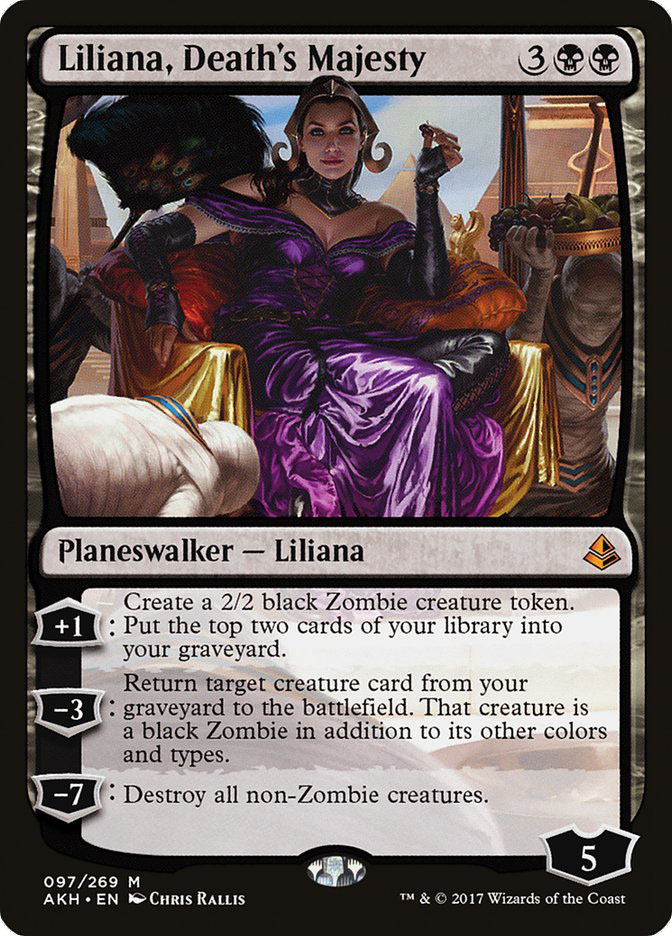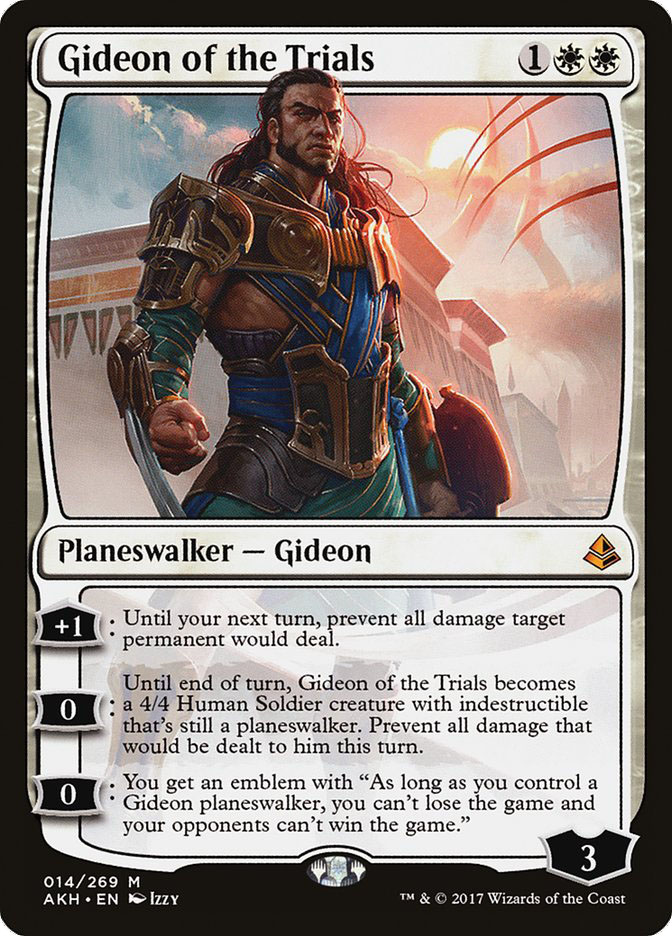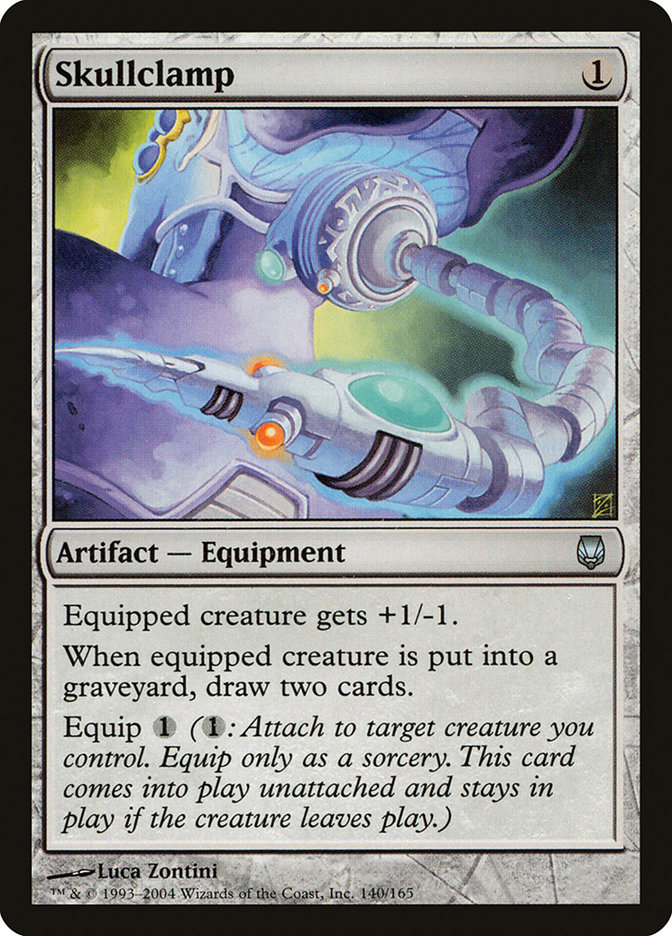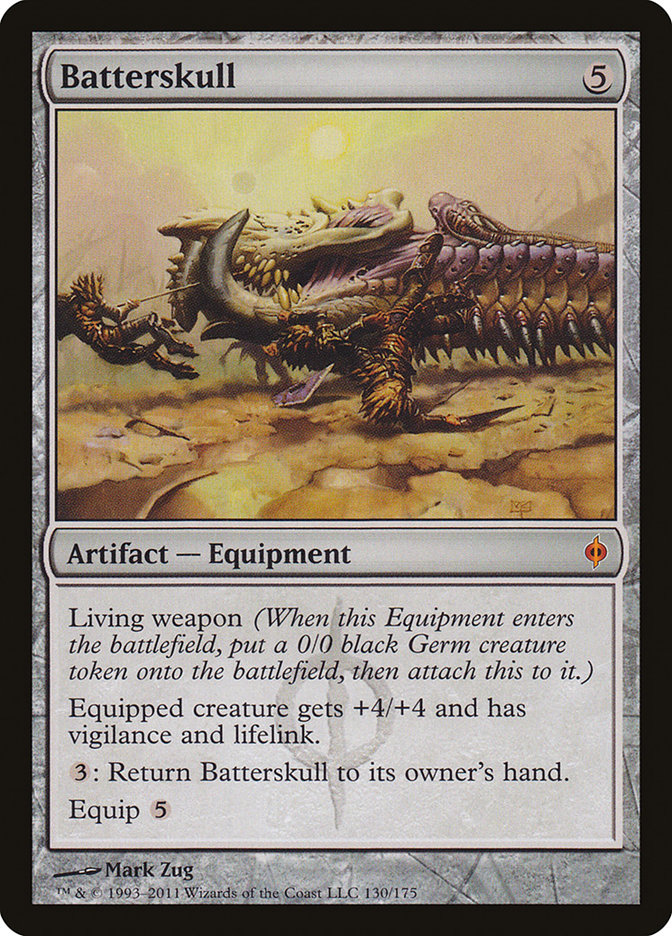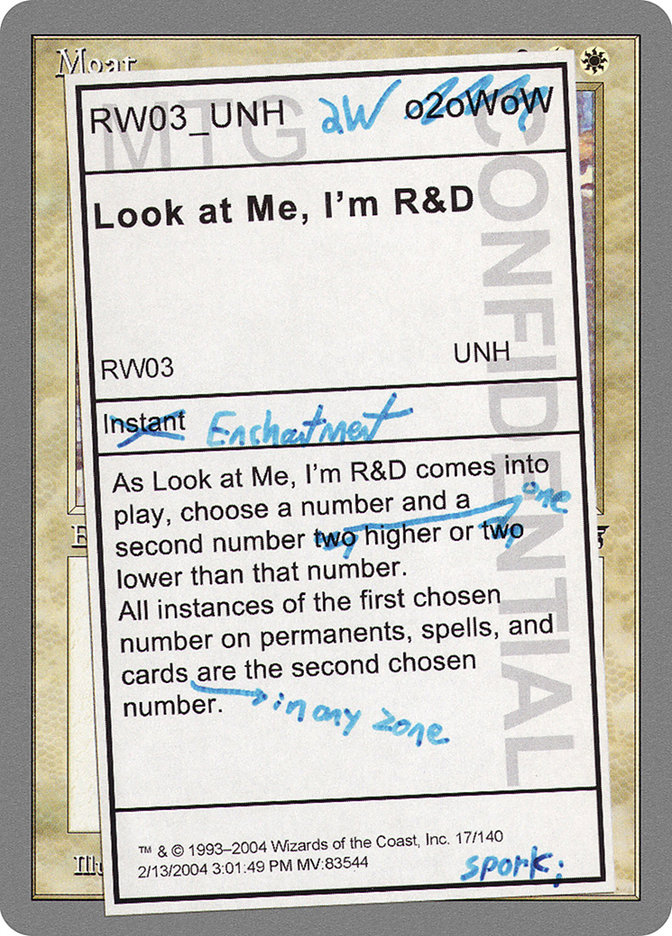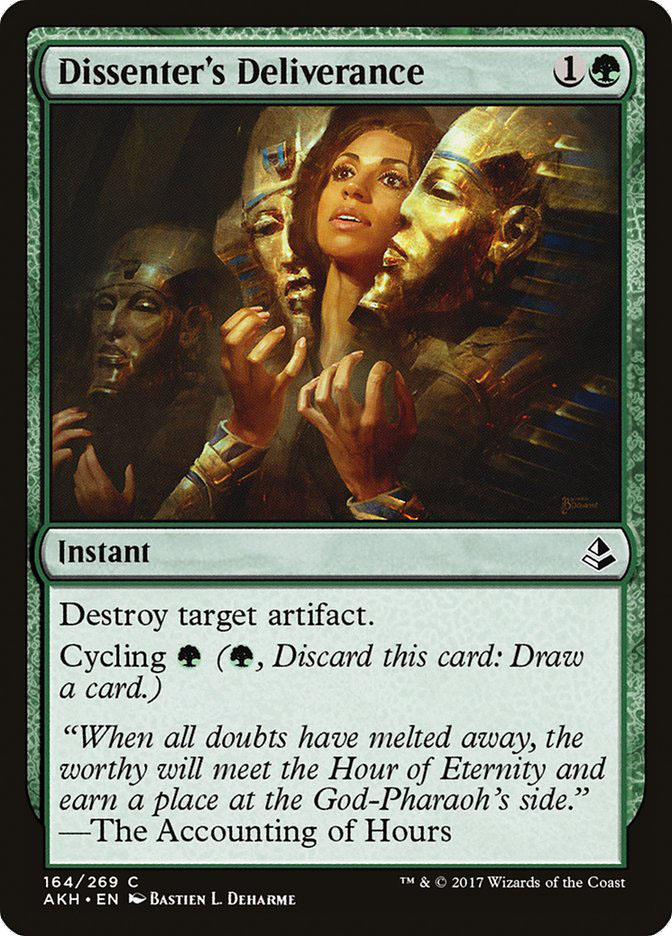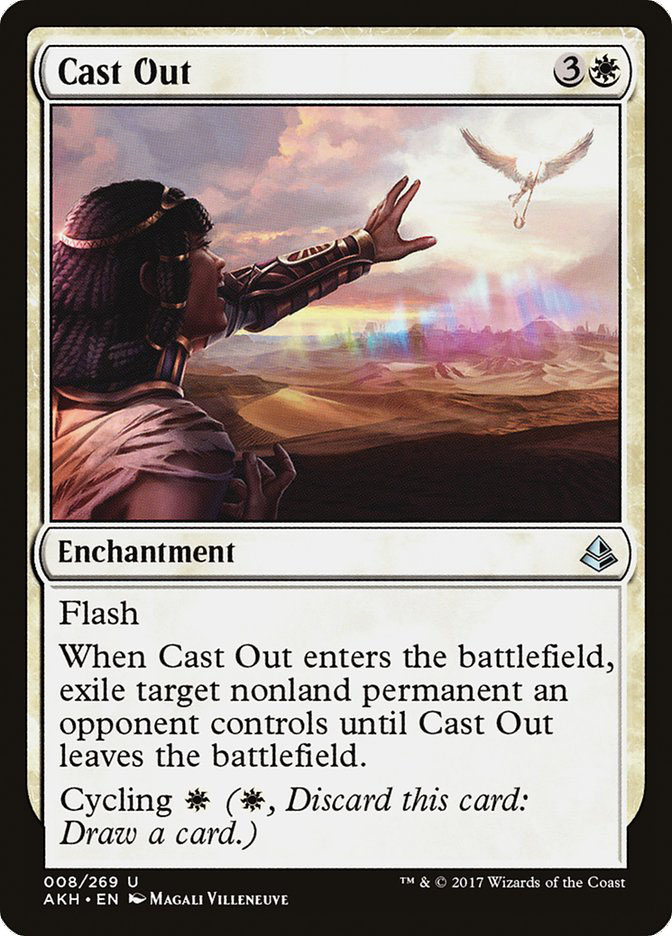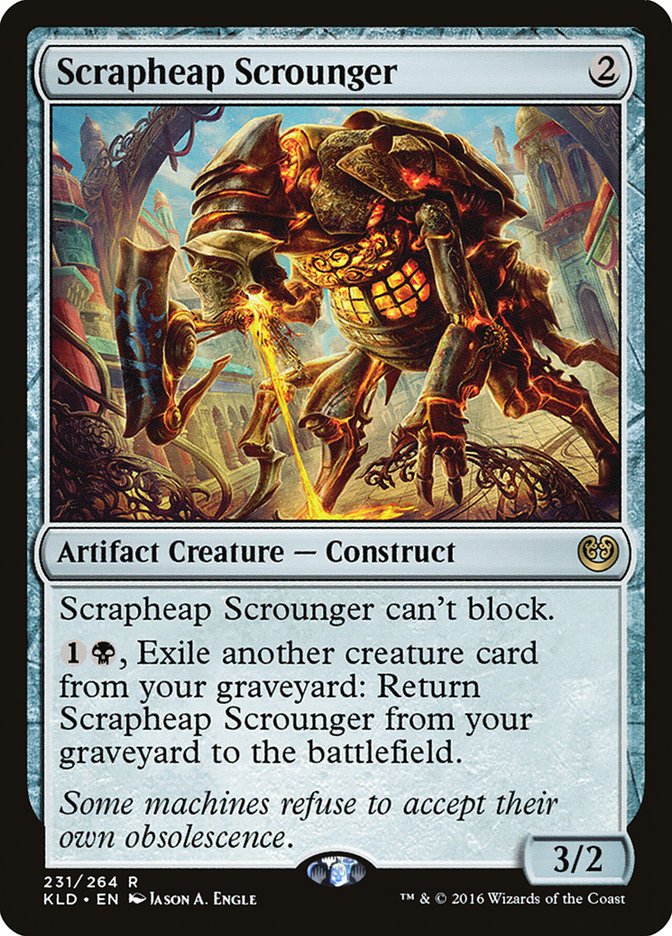The release of Amonkhet is right around the corner, and normally I’m excited to get to work on figuring out how the newest additions will impact Standard. This time around, however, I have a sneaking suspicion that I’m not working with perfect information. Not just in the sense that Amonkhet isn’t fully previewed yet, but that there may be another banning incoming. With the release of Aether Revolt, Wizards of the Coast set a new precedent that they will ban cards in the format in an attempt to make it as good as possible. Lately Standard hasn’t been the beacon of health it has shown us in the past it can be, so the only reasonable expectation to have is they will manipulate the format in some way.
It’s difficult to know how to evaluate these Amonkhet cards with that in mind. We yet to know what these new cards will have to compete against, since there’s a relatively good chance we will see at least one card getting “the axe” once again before the newest set is released. This puts us in a peculiar position. Do we design new decks with Amonkhet cards in mind with or without the cards we subjectively deem “too good to exist” from past sets?
I’m not the only one with these feelings. As of late, anywhere you look, players are discussing why Standard is unhealthy and what Wizards could do to improve it rather than being interested in the new cards themselves. There are so many theories roaming around that they independently all just look like red herrings. Or, just maybe, they all play their individual role in this melting pot of misfortune that has become our beloved Standard format.
The “Gatewatch” Theory
It’s common knowledge at this point that the inclusion of planeswalkers into the game itself has played a significant role in combining the storyline with the spells. The pinnacle of this trope was Battle for Zendikar, where a group of planeswalkers band together to defeat an enemy more powerful than them as individuals. The Battle for Zendikar storyline was rich and exciting, and left us as fans of the story wanting more. Wizards was more than happy to indulge our fascination with this group of planeswalkers, and continued their storyline as a motley crew fighting for justice all the way to the present time, as we find them now on Amonkhet.
The theory of centering the entire Magic universe around a small collective of planeswalkers sounds great, but the execution hasn’t left us with the same results we were expecting. Three blocks later, we find these characters underdeveloped in the stories, yet overabundant in the game. Quite frankly, we’ve become sick of these characters impacting our stories and games.
Execution is key, and many believe Wizards has done a poor job. Most believe that Wizards has decided to make these characters too abundant in both quantity and quality in the game itself. Not only are there too many of each planeswalker legal in the Standard format, but they are also too powerful compared to the other “non-Gatewatch” planeswalkers, making them the only options when trying to be competitive. The biggest offender is Gideon, Ally of Zendikar.
This card has severely impacted Standard ever since its release in Battle for Zendikar, and nothing gives us the impression that things will change until this card rotates out of the format. Players have become tired of this card and want nothing more than to experience the Standard format without the necessity of obeying the rules this card enforces. This level of frustration has only been exacerbated by the fact that Wizards has also gone back on their decision to change Standard to a six-set format.
The “Eight-Set Rotation” Theory
The way Magic cards released changed a few years ago. Wizards made an announcement that they would not only be getting rid of Core Sets but also were changing how blocks would be released. Instead of them normally being three sets each, blocks would now only include two individual sets. This would allow them to easily transition over to a new rotation cycle in Standard, allowing a two-set block to rotate out every six months or so.
Later they went back on this decision, stating that the retention level of more casual players was suffering due to this shift and that they would be reversing it. Many, including me, were perplexed by this decision, since Wizards didn’t even give it a true chance to succeed. The only sets that rotated under this “new” system were Khans of Tarkir and Fate Reforged, which divided a full block from legal play. Dragons of Tarkir, being the third set in the Khans Block, would stay legal in Standard without its other two corresponding sets. Of course casual players were confused by this and didn’t like it. The execution of the new model was terrible!
We are still experiencing issues today from this decision reversal. Amonkhet showcases Gideon of the Trials that’s invalidated by Gideon, Ally of Zendikar, and Never//Return sits on top of Ruinous Path. Oh, and don’t let me forget Amonkhet also hosts Standard’s second Liliana and third Nissa. Clearly Amonket was designed under the impression that Battle for Zendikar and Oath of the Gatewatch would have rotated out when it released.
The “Impact Inflation” Theory
Another theory to why Standard’s felt unhealthy for some time is Wizards hasn’t been properly balancing the power-level of their newest sets as they release. We all understand that Wizards is a company that needs to make money, and the easiest way to do that is for each new set to sell record-breaking numbers of packs. To do this effectively, the new cards have to have a major impact on the formats they are being added to. Wizards has been doing this in spades as of late, since each new set has greatly redefined the Tier 1 archetypes in Standard as the sets have been made legal in the format.
This is normally accepted with open arms from the community, but lately it’s been disconcerting given the quantity of viable strategies. Instead of new cards being integrated into an already vibrant metagame, these cards completely shift the fabric of the format. The end result is always the same, however. The newest additions to the format take over, and stifle creativity as they restrict the amount of viable strategies that can properly defeat them. Standard eventually evolves into a “two-deck” format where there is an overpowered deck and its Achilles Heel (the only deck that can compete with it).
The “Artifact Block” Theory
The last major theory to why Standard is unhealthy is one that looks at the trends of the format through the years. Ever since the inclusion of Standard, artifact blocks have proven time and time again to affect the format negatively.
Each artifact block has been involved in the format needing bans. Urza’s Saga’s Tolarian Academy, Darksteel’s Skullclamp, New Phyrexia’s Batterskull, and now Kaladesh’s Smuggler’s Copter have all been the catalyst for why Standard needed emergency action. Obviously other things were also to blame in each of these instances, which is why we haven’t yet come to the conclusion that artifact blocks are a disease to the format.
It’s easy to understand why this might be possible, though. If “impact inflation” does exist, then artifact sets have the highest probability of “breaking” Standard. After all, Wizards doesn’t want to make an artifact set that doesn’t impact the format, so they need to make sure a handful of artifacts are good enough to break through in Standard. Artifacts don’t exist under the same restrictions as colored cards do. Any colors can adopt them, which gives them the highest likelihood of being too good. This is clearly dangerous since, if an artifact does break through and become the best card in the format, the color(s) that utilize it best will become the only options for Spike-related play. The format conforms to the artifact, and what was once a card designed for unlimited potential has now limited the format to very specific strategies.
All of these theories play an important role in how Wizards could improve at designing sets, but in the end, it’s their job. They, in fact, make the game we enjoy. Obviously it is important for us to express our concerns so that they can properly tailor the game for our enjoyment, but the decisions are ultimately up to them. It’s up to us to work with what we got.
Schrodinger’s Amon-Cat
Like I said in my opening remarks, we aren’t working with perfect information right now. Until Wizards releases the new Banned and Restricted update we won’t know exactly how to properly evaluate Standard, and thus spend most of our time complaining about how things have gotten to this point instead of working with what we’ve got. Or, and this might sound crazy, we could just prepare for all the possible realities that we might soon start living in!
Nothing Gets Banned
In this reality, Amonkhet will have the lowest impact on Standard than any set in recent history. Four-Color Saheeli and Mardu Vehicles will continue to dominate the format. Players will come out of the gates believing that cards like Manglehorn and Cast Out will have a positive impact on fixing the format, but the reality will be that both decks will just take the best cards from the set and integrate them into their own strategies.
Creatures (17)
Planeswalkers (7)
Lands (21)
Spells (15)

Creatures (20)
- 3 Archangel Avacyn
- 4 Thraben Inspector
- 2 Thalia, Heretic Cathar
- 4 Scrapheap Scrounger
- 4 Toolcraft Exemplar
- 3 Walking Ballista
Planeswalkers (4)
Lands (25)
Spells (11)

Creatures (5)
Lands (22)
Spells (33)

Both Mardu Vehicles and Four-Color Saheeli will get just enough toys to stay in power, but also to compete against each other. We will enjoy the nuances at first, but quickly become tired of it as we realize this is how it will be all summer.
Dissenter’s Deliverance will be the breakout card from the set, and it will begin to see more and more play as time goes on, forcing Mardu Vehicles to continue playing with a transformational sideboard, even though the cost of playing with Dissenter’s Deliverance against an opponent with zero artifacts isn’t that damning.
Temur Dynavolt will be the best Tier 2 deck now that it has access to Magma Spray and Essence Scatter. Pull from Tomorrow will begin the format as a sleeper, but soon the card will see more play as everything settles allowing players to properly prepare for tournaments. (This is true in all realities.)
Felidar Guardian Gets Banned
The combo is dead! Mardu Vehicles begins to get preyed on by more and more strategies, and the tools to do so are prevalent. The only saving grace for Mardu is they still have their biggest weapon: Gideon, Ally of Zendikar. Decks that were negatively impacted by Four-Color Saheeli begin to seep back into the format, like B/G Constrictor, thanks to its ability to combat Gideon, Ally of Zendikar.
Creatures (20)
- 2 Archangel Avacyn
- 4 Thraben Inspector
- 2 Pia Nalaar
- 4 Scrapheap Scrounger
- 4 Toolcraft Exemplar
- 4 Veteran Motorist
Planeswalkers (4)
Lands (24)
Spells (12)

Creatures (26)
- 4 Verdurous Gearhulk
- 4 Longtusk Cub
- 3 Greenbelt Rampager
- 4 Winding Constrictor
- 3 Rishkar, Peema Renegade
- 4 Glint-Sleeve Siphoner
- 4 Walking Ballista
Lands (20)
Spells (14)

Felidar Guardian and Gideon, Ally of Zendikar Get Banned
Both of the most inimical cards in the format get banned just in time for Amonkhet’s release. This will allow for more of the new set’s cards to breathe in a much less hostile environment, and thus see more cards blossom from it. We will still see decks like Mardu Vehicles prosper, but not at the absurd levels we’ve been accustomed to in recent months.
Creatures (19)
- 4 Thraben Inspector
- 1 Pia Nalaar
- 4 Scrapheap Scrounger
- 4 Toolcraft Exemplar
- 4 Veteran Motorist
- 2 Glorybringer
Planeswalkers (6)
Lands (24)
Spells (11)

Gideon of the Trials will become best friends with Heart of Kiran, but this dynamic duo is much less threatening. Artifact removal will in fact become more prevalent, thanks to Verdurous Gearhulk taking a much more dominant position in the format, but that will open the format up for traditional control decks to prey on the linear midrange deck. I believe this to be the healthiest of all the possible realities, since we no longer live under the restrictions of Gideon, Ally of Zendikar or Saheeli combo. Without these strenuous limitations, we may see the format blossom now that there are flexible answers to the format’s more diverse threats.
Red aggressive decks may have a chance to shine given the new tools, but the biggest issues for them are still prominent. Cards like Aethersphere Harvester, Magma Spray, Fatal Push, Winding Constrictor, and Ishkanah, Grafwidow still exist, which could put a damper on these aggressive shells. Without spells like Stoke the Flames or Lightning Bolt, I just don’t see how these little red creatures are doing anything better than their predecessors.
They also have a bigger issue with being the second-best aggressive thing you can be doing behind Mardu Vehicles.
Felidar Guardian, Gideon, Ally of Zendikar, and Heart of Kiran Get Banned
Now this is when things get interesting. A Heart of Kiran ban makes perfect sense, after all. We already discussed how good artifacts tend to “pigeonhole” us into pairing them with the color combination that utilizes them best. We see exactly this with the Mardu colors being the best colors to support Heart of Kiran. This Vehicle needs crew 3, which cards in Mardu best provide. A ban on Heart of Kiran would open up the stranglehold Mardu Vehicles has on being the only aggressive deck in the format.
This is the only way I could see the Gods of Amonkhet getting a real shot at being playable in Standard. Each one of them looks to have strong applications in Standard, but not when Mardu Vehicles forces every other deck to play so many reactive cards. After all, why invest the time and energy into turning on Gods when it’s way easier to just crew a Heart of Kiran?
There’s also an argument to leave Heart of Kiran in the format but ban something else that makes it so powerful. Many have discussed that Scrapheap Scrounger allows the deck to be too resilient to removal, which is something I tend to agree with, but I also hold true to my belief that it’s better to ban the disease and not the symptom.
Scrapheap Scrounger outside of a Mardu Vehicles shell is just a good card. B/G Constrictor decks have played it in the past, with no one claiming it too powerful. The card has only become oppressive in combination with Heart of Kiran and Gideon, Ally of Zendikar. I wouldn’t take kindly to Scrapheap Scrounger getting the axe.
This also seems like the best reality for control decks to take over the format. No longer will control decks have to worry about infinite combos; Emrakul, the Promised End; or hyper-powerful yet resilient aggro decks. Counterspells would love to rule a world where other decks can’t properly fight back, and after such a long time without them dominating, it might not be such a bad reality to live in for a while. I’m not one who enjoys control-based Standard formats, but I can be objective enough to realize that these mages have been getting the short end of the stick for quite some time.
In the end, it’s difficult to know exactly what’s going to happen. Hopefully Wizards makes the correct decision, whatever it is, and we see Amonkhet blossom into a healthy Standard environment. The set does seem to have a decent amount of interesting and diverse cards.
I just hope that they take some action, whatever it is, to remedy some of the blunders that have caused this format to become so volatile. I believe the worst reality we could potentially start living in is one where they just abruptly stop tinkering with a format they’ve spent so much time tampering with in recent history. The format needs something, and I have faith Wizards is up for the task of solving exactly what that is.



